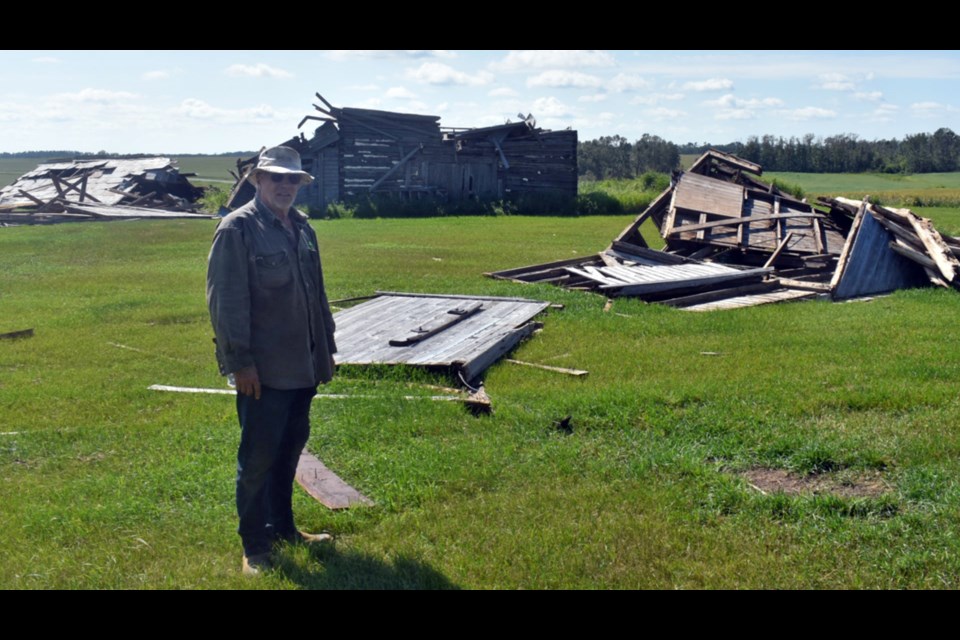VEREGIN — “If you want to farm, sometimes you just have to pick up the pieces and move on,” Kerry Horkoff of Kamsack, said last week on a tour of his farm located about 10 kilometres north of Veregin.
Horkoff agreed to show his property and that of some of his neighbours to the Kamsack Times in order to show the destruction of property and crops that occurred the night of Aug. 13, when severe winds and hail struck a large area that included Kelvington, Wadena, Preeceville, Amsterdam and Tadmore, and ended just before reaching Kamsack.
Photos posted on SASKTODAY.ca show serious damage was reported in the Kelvington area, with the Co-op gas bar's roof destroyed and grain bins tipped in multiple spots. Hail was said to have been the likely main culprit, but strong winds are also prominent in severe storms.
Damage was also reported around Lintlaw, where trees were seen on the ground, a snowmobile trailer upturned and a van outside of town tipped on its side.
Saturday night saw storms hit hard near Preeceville, where a poultry farm was damaged.
“It was a plough wind,” Horkoff said, pointing to a nearby wooded clump where many of the trees were snapped or uprooted, all leaning in the same southeastern direction.
“I was here until about 8 p.m. on Aug. 13, and then went home,” he said. “On Sunday morning, a neighbour called, suggesting I check my yard.
“This was the third such event I’ve experienced in 10 years,” he said, adding that he’s been farming the one section of land for 48 years.
Listing the damage to his property, Horkoff mentioned three bins, vacant buildings on an ancestral farmyard that were destroyed, many trees that were broken and uprooted, but most importantly, canola and wheat crops that were extensively damaged.
“That wheat is about 85 per cent damaged,” he said, and when looking over a canola crop he explained that all the white one can identify on the top of the plants is the result of hail damage.
“Look at how all the plants are leaning in one direction,” he said, as he pulled off a canola pod that contained white spots where it was struck by the force of the hail.
Horkoff stopped at Nadojda Cemetery, a cemetery that had been located near to a Doukhobor community more than 100 years ago, where huge spruce trees were fallen over the gravestones, some had snapped, some were uprooted.
At Tolstoi Cemetery, another cemetery that originated by a nearby Doukhobor community, again large spruce trees were toppled over, snapped and uprooted, some pushing over tombstones. En route, Horkoff pointed to the neighbours’ property where trees in clumps of bush were broken and crops were damaged.
“All these crops were touched. Everybody got hit,” he said, mentioning one neighbour who lost a bin, and another whose canola crop was “all white.”
His farmer’s eye was able to identify the section of a field of canola that was damaged and contrasted that with the green and still-blooming section of the field that had been protected by a nearby bush.
“These plough winds are getting more frequent, and all the yards that are wide open took a big hit.”
Seeing silver bins in the distance, Horkoff drove towards them, located on property being farmed by a neighbouring Hutterite community. Arriving at the bins, one could see that three of them, each able to store 10,000 bushels of grain, were knocked over and damaged.
A neighbour, who was at home at the time of the storm, said that it had sounded like a freight train, Horkoff said.
“We’ve got a big clean-up,” he said.




